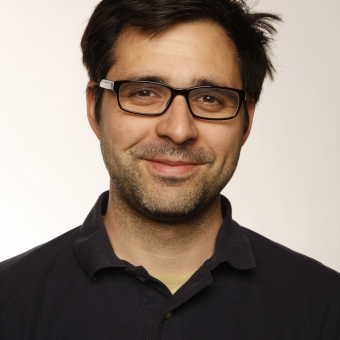Using Scenarios to Solve Problems
Kim Goodwin · Monday, November 12 · 8:30 am – 5:30 pm · in Plaza C
Delve into journey mapping to identify opportunities, create scenarios that resolve design issues, and storyboard solutions that delight users. Break down internal silos so you can build user-driven experiences.
Stop letting organizational processes get in the way of real solutions. Learn powerful sketching and collaboration techniques that will align your teams.
We’re excited Kim Goodwin is joining us with this top rated workshop again this year.
The Day’s Agenda
Morning
Create journey maps to understand the users’ current experience
- Understand the entire user experience, across your organizational silo’s boundaries.
- Identify which parts of the journey will require the most attention.
- Make the next steps clear to the entire team by creating the right artifacts.
Dig into how scenario-driven design gets teams on the same page
- Learn what, why, and how of scenarios, data-driven stories about your users.
- See how scenarios relate to Agile user stories.
- Decide when to use personas (or not) in your scenarios to deliver insights on what to design.
Afternoon
Generate better design solutions using the power of storytelling
- Identify important requirements with your personas’ human qualities.
- Get agreement on vision before settling on specific solutions.
- Make storytelling a tool for selling your ideas.
Integrate scenarios into your daily work
- Master using scenarios to drive structure and flow.
- Take advantage of scenario-driven storyboarding for quick iterations and idea refinement.
- Use scenarios to support design decisions at the pixel level.
A Framework for Making Design Decisions
Stop feature creep and design debates
Some people jump from user research to “here’s how it ought to work” without connecting solutions to data. Use journey maps and scenarios to translate user research into a plan.
Bridge the gap across teams and devices
Everyone on your team—and every element in your design—needs to work toward a single experience. See how awesome it is when people consider UX transitions between platforms or teams.
Unsuck your existing user experience
Find out when your users feel frustrated—and why—at every touch point in their journey. Hear how their answers change as they progress, then use their feelings and goals to inform your decisions.
You’ll see how to:
- Get to a common view of problems, letting scenarios drive your thinking.
- Apply scenarios to describe the cross-channel experience.
- Slip scenarios into your Agile, waterfall or hybrid process.
- Understand the big picture design priorities with scenarios as your guide.
- Tie research data directly to the cross-platform solutions you create.
- Visualize your solutions with rich, accessible stories and sketches.
Save Your Time and Sanity with Scenario Design
Deliver more powerful, compelling designs
Translate the flow and emotion of a good story to your UX, then follow users on their journeys.
Establish a coherent design process
Use scenarios to connect the dots from one part of a design to another, inform your early sketches, and provide design insights about users’ needs.
Implement a UX-driven process for defining requirements
Use data-driven and human-centered scenarios to drive your product requirements.
Encourage multi-channel team collaboration
Get colleagues to talk openly, solve problems, and design cross-device experiences together.
Solve Real Problems Using Low-fidelity Design Techniques
In hands-on exercises, you’ll design cohesive, multi-channel experiences starting with a journey map, then with scenarios and sketches. You’ll also work individually and in small groups to create service-level scenarios.
Kim Goodwin Process Maven

Ask Kim any question and you’ll instantly get deep, thoughtful insights that come from her years of experience working on the toughest designs imaginable. (Seriously, try it!)
Kim has been dedicated to user-centric practices like this since her days running the training and design consulting practices at Cooper, a leading agency. There, she played a major role in crafting their Goal-Directed design process, which brought users into their clients’ most challenging projects. As VP of Product and UX at PatientsLikeMe, Kim took on big design challenges daily. Kim continues to consult with consumer and enterprise clients to improve their own capabilities
Kim Goodwin’s scenario design workshops have been top-ranked by attendees, so we couldn’t wait to bring her back again this year. In fact, dozens of attendees told us they’re now using scenarios at work. She’s also the author of Designing for the Digital Age, considered the complete handbook for the design professional.

